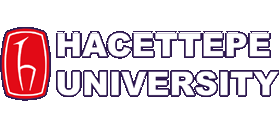ACADEMICS
Course Details
ELE775 - Image Processing
2025-2026 Fall term information
The course is not open this term
ELE775 - Image Processing
| Program | Theoretıcal hours | Practical hours | Local credit | ECTS credit |
| PhD | 3 | 0 | 3 | 10 |
| Obligation | : | Elective |
| Prerequisite courses | : | - |
| Concurrent courses | : | - |
| Delivery modes | : | Face-to-Face |
| Learning and teaching strategies | : | Lecture, Question and Answer |
| Course objective | : | In order to equip the students with the capability to solve real-life problems in image processing, this course aims to teach the following topics to the students: basic concepts of image processing , image enhancement, restoration and compression, image segmentation and image representation for object recognition |
| Learning outcomes | : | Know the basic concepts and approaches in image processing, Apply the techniques and algorithms s/he learnt in the class in real-life applications, Have the adequate knowledge to follow and understand advanced up-to-date image processing techniques. |
| Course content | : | Basics of image processing: Spatial and Frequency Domains. Image enhancement. Image restoration. Multiresolution image processing. Image compression. Image segmentation. Image representation and description for object recognition. |
| References | : | Gonzalez R. C., Woods R. E., Digital Image Processing, 3rd ed., Prentice-Hall, 2008. |
| Weeks | Topics |
|---|---|
| 1 | Basic concepts in image processing |
| 2 | Image enhancement in the spatial domain |
| 3 | Image transforms |
| 4 | Image enhancement in the frequency domain |
| 5 | Image restoration |
| 6 | Color spaces and color image processing |
| 7 | Multiresolution image processing: Wavelets |
| 8 | Midterm Exam |
| 9 | Image compression |
| 10 | Image coding |
| 11 | Morphologic operations |
| 12 | Image segmentation |
| 13 | Image representation and description |
| 14 | Introduction to object recognition |
| 15 | Preparation week for final exams |
| 16 | Final exam |
| Course activities | Number | Percentage |
|---|---|---|
| Attendance | 0 | 0 |
| Laboratory | 0 | 0 |
| Application | 0 | 0 |
| Field activities | 0 | 0 |
| Specific practical training | 0 | 0 |
| Assignments | 8 | 40 |
| Presentation | 0 | 0 |
| Project | 0 | 0 |
| Seminar | 0 | 0 |
| Quiz | 0 | 0 |
| Midterms | 1 | 20 |
| Final exam | 1 | 40 |
| Total | 100 | |
| Percentage of semester activities contributing grade success | 60 | |
| Percentage of final exam contributing grade success | 40 | |
| Total | 100 | |
| Course activities | Number | Duration (hours) | Total workload |
|---|---|---|---|
| Course Duration | 14 | 3 | 42 |
| Laboratory | 0 | 0 | 0 |
| Application | 0 | 0 | 0 |
| Specific practical training | 0 | 0 | 0 |
| Field activities | 0 | 0 | 0 |
| Study Hours Out of Class (Preliminary work, reinforcement, etc.) | 14 | 10 | 140 |
| Presentation / Seminar Preparation | 0 | 0 | 0 |
| Project | 0 | 0 | 0 |
| Homework assignment | 8 | 9 | 72 |
| Quiz | 0 | 0 | 0 |
| Midterms (Study duration) | 1 | 20 | 20 |
| Final Exam (Study duration) | 1 | 25 | 25 |
| Total workload | 38 | 67 | 299 |
| Key learning outcomes | Contribution level | |||||
|---|---|---|---|---|---|---|
| 1 | 2 | 3 | 4 | 5 | ||
| 1. | Has highest level of knowledge in certain areas of Electrical and Electronics Engineering. | |||||
| 2. | Has knowledge, skills and and competence to develop novel approaches in science and technology. | |||||
| 3. | Follows the scientific literature, and the developments in his/her field, critically analyze, synthesize, interpret and apply them effectively in his/her research. | |||||
| 4. | Can independently carry out all stages of a novel research project. | |||||
| 5. | Designs, plans and manages novel research projects; can lead multidisiplinary projects. | |||||
| 6. | Contributes to the science and technology literature. | |||||
| 7. | Can present his/her ideas and works in written and oral forms effectively; in Turkish or English. | |||||
| 8. | Is aware of his/her social responsibilities, evaluates scientific and technological developments with impartiality and ethical responsibility and disseminates them. | |||||
1: Lowest, 2: Low, 3: Average, 4: High, 5: Highest
